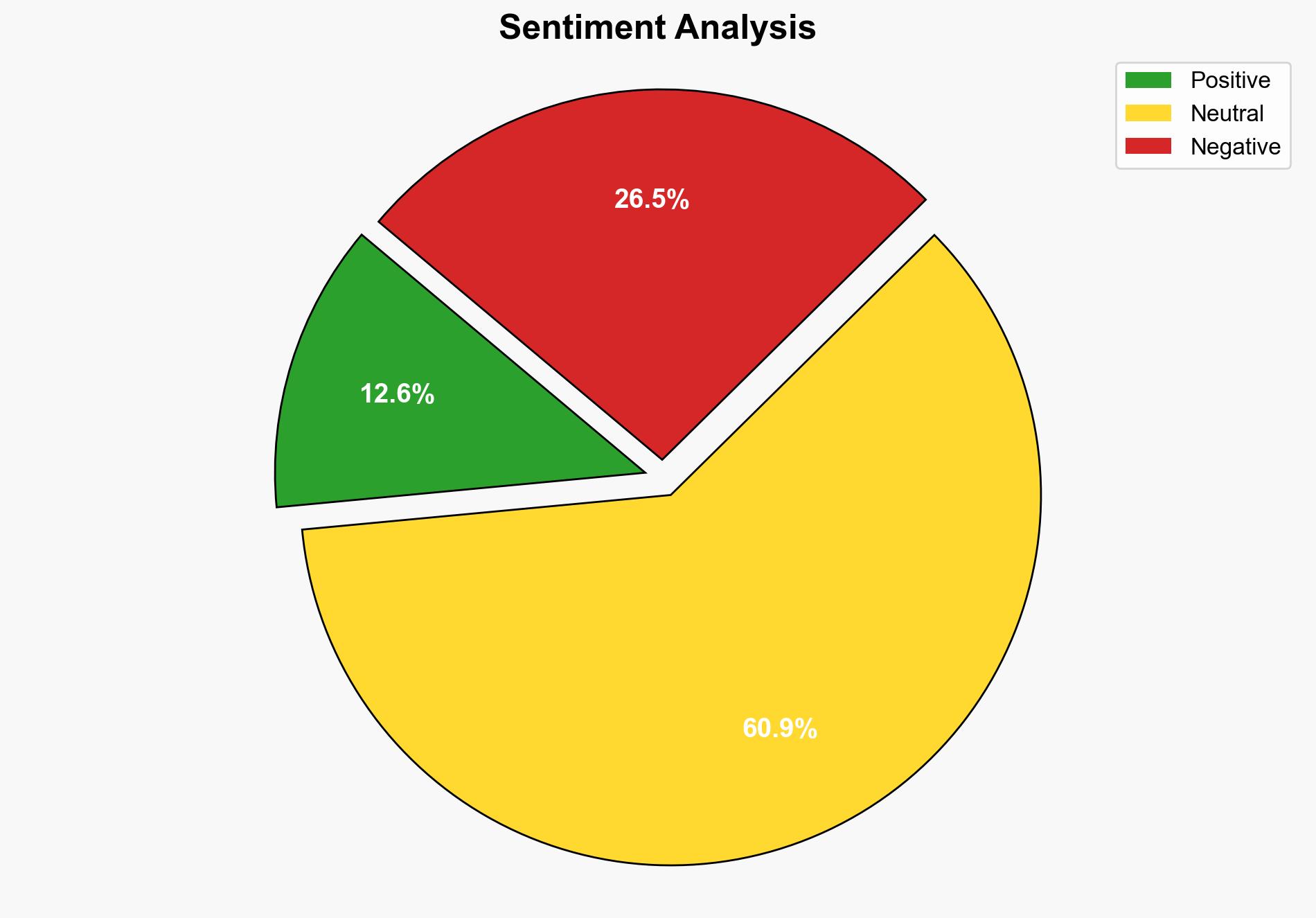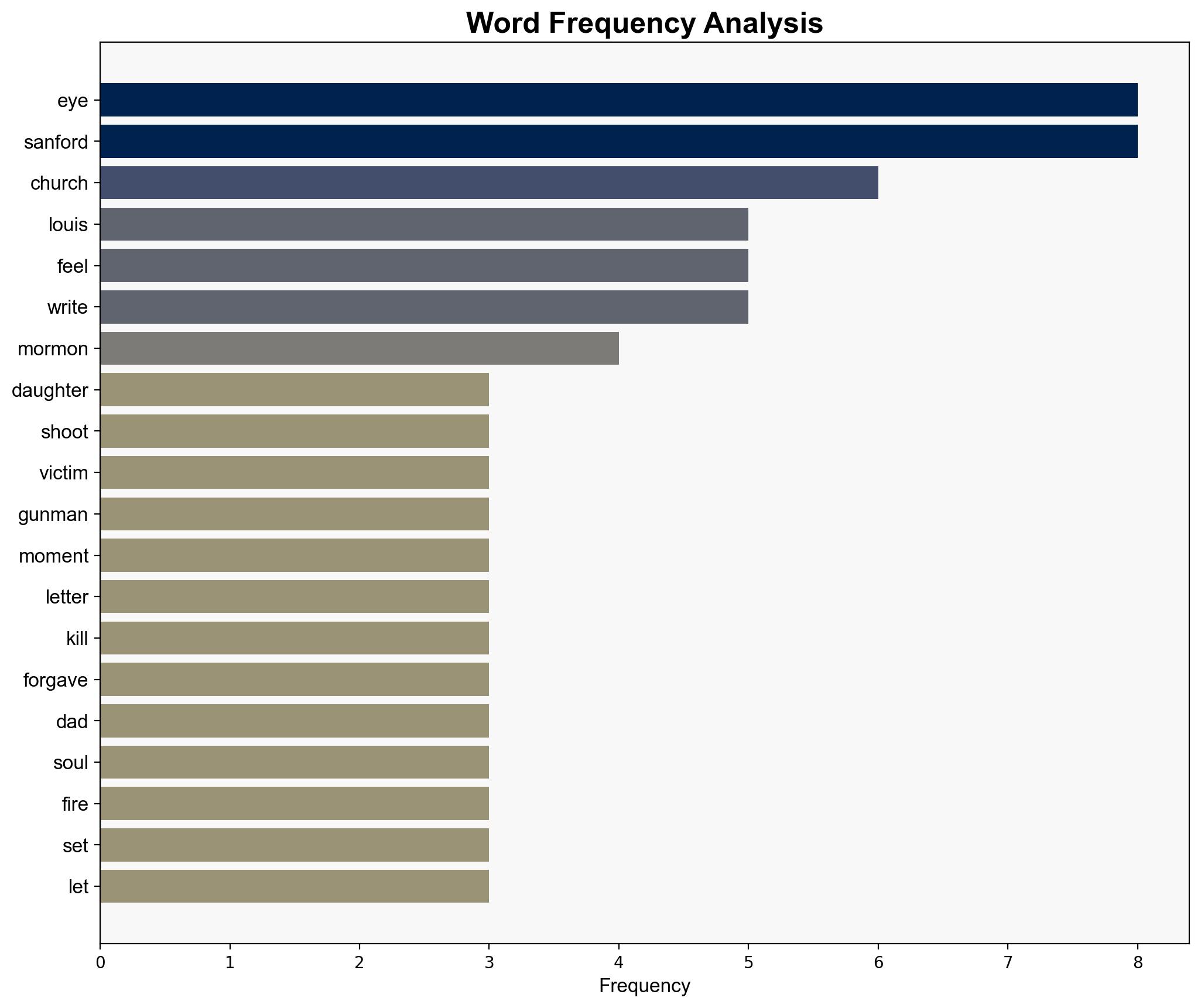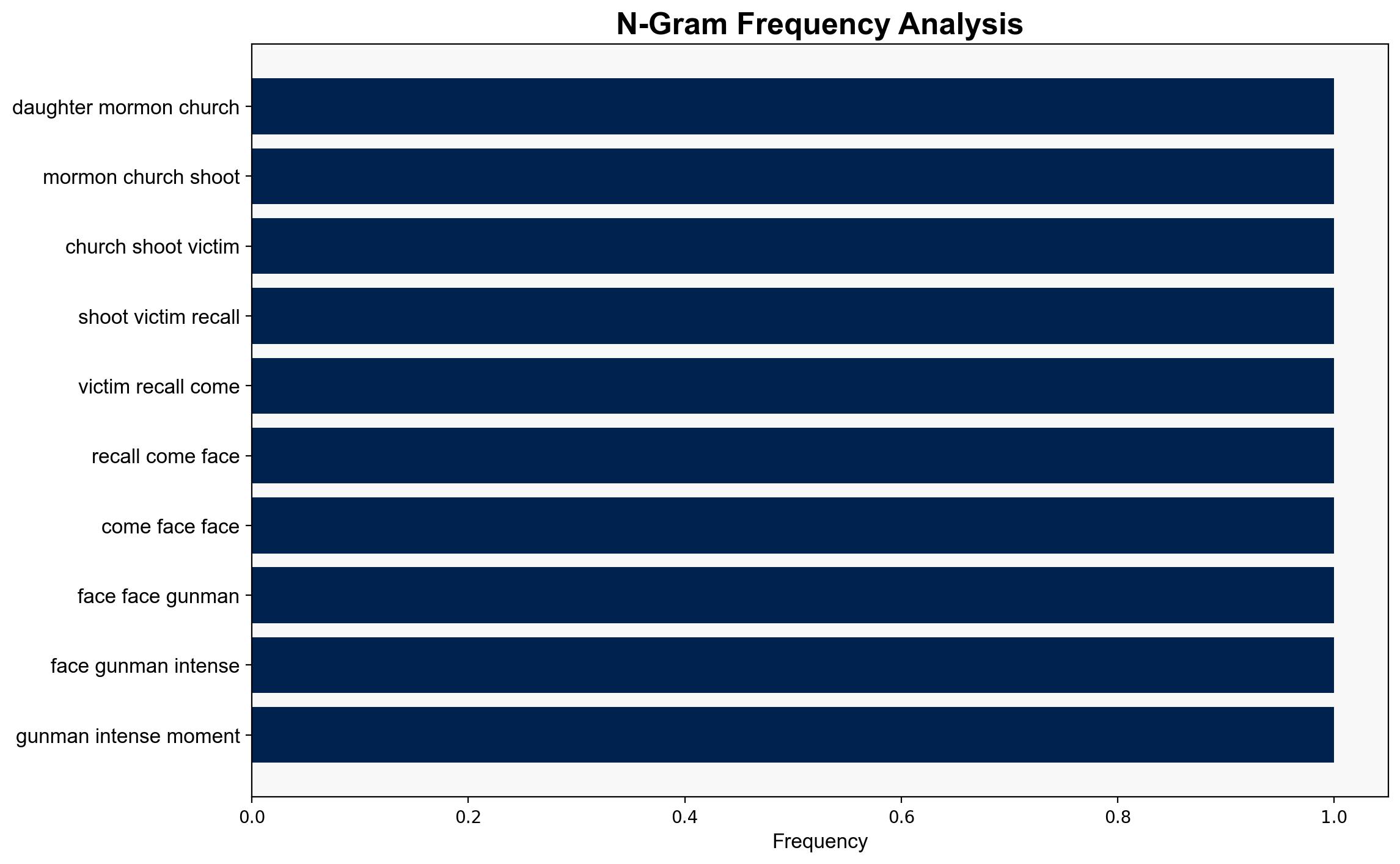Daughter of Mormon church shooting victim recalls coming face to face with gunman in intense moment of forgiveness letter – New York Post
Published on: 2025-10-01
Intelligence Report: Daughter of Mormon church shooting victim recalls coming face to face with gunman in intense moment of forgiveness letter – New York Post
1. BLUF (Bottom Line Up Front)
The analysis suggests that the shooting incident at the Mormon church in Michigan may have been motivated by personal grievances rather than ideological extremism. The hypothesis that the gunman acted out of personal turmoil is better supported by the available evidence. Confidence level is moderate due to limited information on the gunman’s background and motivations. Recommended action includes further investigation into the gunman’s history and psychological state to prevent future incidents.
2. Competing Hypotheses
Hypothesis 1: The gunman, Thomas Jacob Sanford, acted out of personal psychological distress rather than ideological motives. This is supported by the daughter’s account of seeing pain and loss in his eyes and the lack of explicit ideological statements during the incident.
Hypothesis 2: Sanford’s actions were driven by anti-Mormon sentiment, as suggested by his reported comments to a local city council candidate labeling the religion as “antichrist.”
Using Analysis of Competing Hypotheses (ACH), Hypothesis 1 is more consistent with the available evidence, particularly the daughter’s perception of the gunman’s emotional state and the absence of a clear ideological manifesto or prior threats.
3. Key Assumptions and Red Flags
– Assumption: The daughter’s perception of the gunman’s emotional state is accurate and not influenced by trauma or stress.
– Red Flag: The discrepancy between the daughter’s perception of the gunman’s eye color and reality suggests potential memory distortion.
– Missing Data: Lack of comprehensive background information on Sanford’s mental health and personal history.
4. Implications and Strategic Risks
– Potential for similar incidents if underlying personal grievances are not addressed.
– Risk of misattributing the motive, leading to ineffective policy responses.
– Psychological impact on the community and potential for increased fear or retaliatory actions.
5. Recommendations and Outlook
- Conduct a thorough investigation into Sanford’s background, focusing on psychological evaluations and personal history.
- Enhance community outreach programs to identify and support individuals experiencing psychological distress.
- Scenario Projections:
- Best Case: Identification and intervention in similar cases prevent future incidents.
- Worst Case: Misinterpretation of motives leads to increased tensions and further violence.
- Most Likely: Continued investigation provides clarity, leading to improved preventive measures.
6. Key Individuals and Entities
– Thomas Jacob Sanford
– Lisa Louis
– Craig Hayden
7. Thematic Tags
national security threats, psychological analysis, community safety, religious tensions




